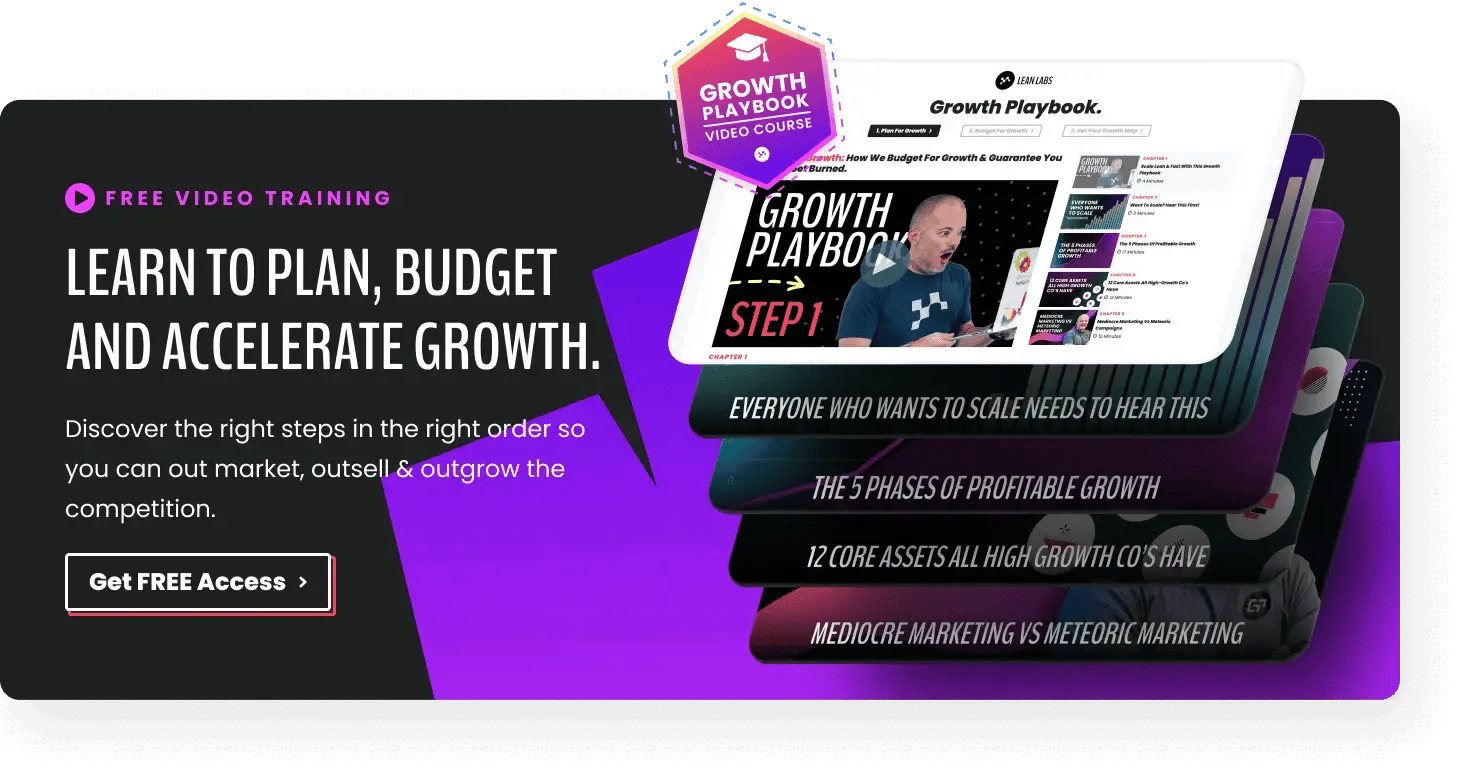-
What is Horizontal Growth?
-
Horizontal vs. Vertical Growth: Which is Right for Your Business?
-
What is a Growth Strategy?
-
Horizontal Growth Strategy
-
Vertical Growth Strategy
-
Vertical and Horizontal Growth Strategies Work Better Together
-
Horizontal vs. Vertical Growth Strategy: Forge Your Path Towards Business Growth

Vertical Growth vs. Horizontal Growth: Definitions & Which is Best
All successful businesses have a common denominator: an effective growth strategy.
Imagine a tree that has no roots. Or with roots that are thin and fragile. It wouldn't grow very high, would it? Just like a tree can't grow without roots, a solid growth strategy is essential for any organization looking to grow and expand.
There is no such thing as a one-size fits all growth strategy. The nature of your business and product should determine your approach to growth.
But before you're ready to create a plan for growth, you must first understand the two growth frameworks: vertical growth and horizontal growth.
What is a Growth Strategy?
Before diving deeper into the specific components of both horizontal and vertical growth, it's important to define and identify what exactly a growth strategy is. In its simplest form, a growth strategy is a company's plan or blueprint for expansion and revenue growth. It includes clear tactics or strategies to implement and solutions for potential obstacles or challenges.
A growth strategy is important for any business because it identifies where the growth opportunities are, what steps your team will take to get there, and how to overcome any challenges that might pop up along the way.
Horizontal growth and vertical growth can show up in a growth strategy through plans like product expansion, additional service offerings, expansion into new industries, expansion overseas, and anything that has to do with driving new revenue.
While you might not see a section of a growth strategy labeled "horizontal growth", understanding what makes up an effective growth strategy will help you create an actionable plan to execute. We don't just want you to walk away knowing what the definition of a growth strategy is. The goal is for you to feel confident in building a growth plan of your own, horizontal or vertical, and implement strategies that will help your business grow.
Horizontal Growth Strategy
Horizontal growth means expanding products or services to new markets. This can be done by developing a new market or penetrating an existing market. Organizations may look to horizontal growth when they have a successful pre-existing product to expand to new industries or geographic markets.
For example, a financial tech company may succeed in working with banks and then build a business case to expand into government. Horizontal growth requires market research to understand what obstacles or challenges you might face in entering new markets. The same fintech company may realize they need to build additional security features or integrations with existing security platforms to be viable in the government sector.
If you're lucky, horizontal growth can simply mean targeting a new audience, but often it requires ample preparation to be successful. New industries or markets can mean introducing new use cases, working on new features, or cleaning up existing functionality to best fit your target expansion. It could also mean localizing your marketing message for new geographies or hiring sales and customer success teams that can speak different languages.
Horizontal Growth Benefits
- Highly lucrative with ample planning
- An entirely new market means huge room for growth
- Significant long-term ROI
- Opportunity to build new features or new ideas
Challenges of Horizontal Growth
- Challenges unique to new markets
- Increased competition
- Can be expensive to build new teams in new geographies
Horizontal Growth Example:
Uber was founded and launched in San Francisco, but later rolled out to thousands of locations across the globe. This meant insane growth for Uber, but this horizontal growth doesn't come without challenges. Growing to new geographies means navigating new laws and regulations in every city, researching driver insurance and safety laws, and incorporating new maps and languages into their application.
Uber saw tremendous growth from growing horizontally, but they did ample research on their new markets before they jumped in. You wouldn't walk straight into a dark cave without trying to flash a light inside. Giving yourself preparation, guidance, and a solid understanding of a new market makes it significantly easier to penetrate.
Vertical Growth Strategy
A vertical growth strategy means scaling products/services inside an existing market. Typically, businesses add additional features or capabilities to existing products/services. If we revisit the fintech example, the company may start by offering simple accounting features and then expand into consulting services. Upselling an add-on to your existing product can be a great way to leverage vertical growth.
Think of it like being asked, "Do you want fries with that" every time you order a cheeseburger at McDonald's. If we look at burgers as their initial product, deciding to offer fries as an additional item is their vertical growth. Fries go great with burgers, and it creates the opportunity for additional revenue with every customer. If you have 100 customers, and every customer now spends an extra $5 per order, you're making an extra $500 in revenue. Imagine how quickly that can add up.
When diving into a vertical growth strategy, a key consideration is determining whether the extra work or investment will be worth the outcome. You can calculate that by considering two factors: investment in, and revenue out. How much does a deep fryer cost? Do we have to hire an additional body for every McDonald's location to manage the deep fryer?
You also need to ask yourself if the new product makes sense when paired with your existing product. Is it an easy sell? If McDonald's started offering spring rolls with their burgers, or health consultations, you might be more reluctant to buy into it. Your vertical growth must make sense and pair well with your existing product for customers to buy in.
Vertical Growth Benefits
- Allows you to go deeper into existing markets
- Most popular growth strategy
- Capitalize on existing success
- Opportunities for new revenue, and new customers
Challenges of Vertical Growth
- Significant upfront investment
- Risk that customers won't want the new product
- Workforce capacity problems
Vertical Growth Example
Instagram has become so much more than just a photo-sharing application. An app that used to be used to keep in touch with friends has now become a full-fledged social media platform. With millions of users, consider how much additional revenue they can generate when introducing new features.
Instagram did precisely this when they introduced paid advertisements to their platform. With users all over the world, they capitalized on businesses wanting to capture a larger audience. They created a revenue opportunity by inviting organizations to pay an additional fee to showcase their content to specific audiences.
Keep in mind, it required a significant upfront investment to build advertising features and incorporate payments directly inside Instagram. It also meant navigating complex laws and regulations around paid advertisements.
Vertical and Horizontal Growth Strategies Work Better Together
Now that you understand the difference between both vertical and horizontal growth strategies, it's important to note how they work together. It should never be a battle between deciding which to pursue, but rather what to implement and when.
If your existing products are selling across enough markets or audiences to make the initial investment of vertical growth worth it, then you know where to begin. If the calculations don't add up and your projected revenue doesn't outweigh the investment of building and managing an entirely new product, you may want to consider expanding horizontally into a new market segment or region.
Growth is all about timing: knowing what should happen and when to keep the ball rolling. That comes with understanding your product like the back of your hand and doing thorough market research to identify your most promising opportunities.
Horizontal vs. Vertical Growth Strategy: Forge Your Path Towards Business Growth
Tackling new opportunities and organizational growth can be a huge undertaking. Whether that means horizontal or vertical growth, your strategy is only as strong as the work that goes into implementing it. From conception, to research, to planning, and eventually execution, growth strategies require a lot of work and labor.
A dedicated team is the key to seeing your revenue opportunities come to fruition.
Many industry-leading businesses and startups go out of their way to find a results-driven growth partner.
Over the years, we've had the opportunity to partner with a ton of deserving brands. From industry-leading startup accelerators to cybersecurity and fintech SaaS companies, we've worked alongside some of the world's leading innovators.
Unfortunately, we can't work with every business as their outsourced growth team to help them execute effective growth strategies. That's why we condensed our most valuable systems and strategies into one resource: The Growth Playbook. The Growth Playbook is designed to help business owners understand their current phase of growth and discover the exact steps they need to take to achieve profitable customer acquisition and scale growth.
The best part? It's 100% free.
Unlock the growth playbook today to take your business to the next level.





